Fraction Strips Up To 12
Fractions can sometimes be a bit tricky for kids, but fraction strips up to 12 can make teaching fractions a whole lot easier!
And the kiddos will love them too!
You may already have a good idea of how you want to use the strips with your kids, but we've git a bunch of ideas here that you can use as well.
Fraction Strips Up to 12
"Equivalent Fractions"
Fraction strips can of course, help young learners build some very important fraction skills. In the picture below, kids can easily visualize equivalent fractions.


Check out another on below. In this example, your young learner/s can see how the fractions one-fifth and one-tenth are relate to each other.
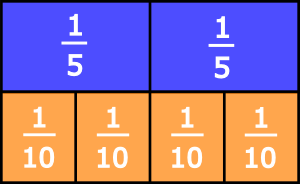

Feel free to print off the fraction strips up to 12 and let the hands-on fraction learning games begin! You can choose to print colored fractions strips or black and white fraction strips below
Below is an equivalent fraction game using fraction strips up to 12 your students should enjoy as they build their fraction skills!
Equivalent Fractions Activity
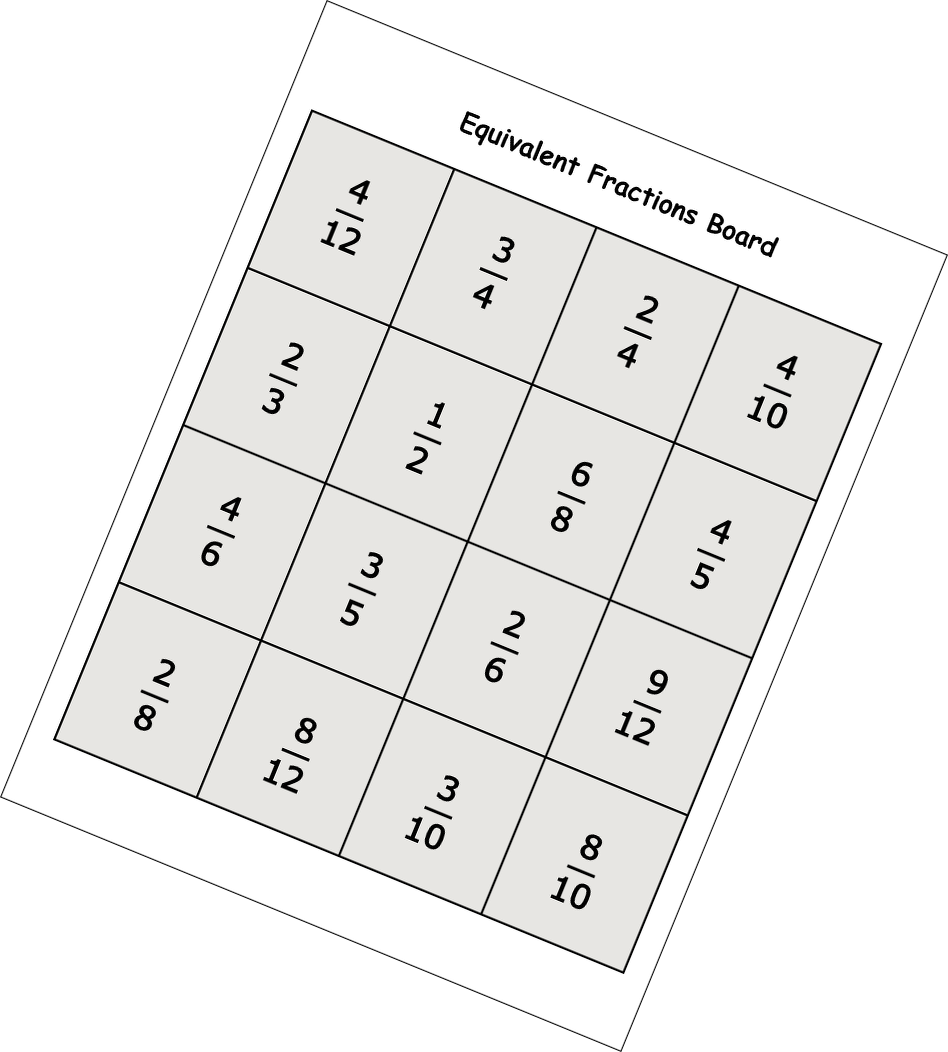
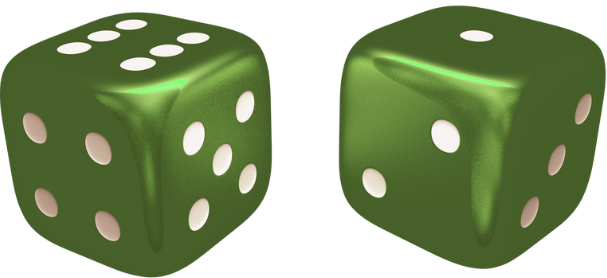
What you Need:
- two dice 6 six-sided dice
- equivalent fraction game sheet - print one for each player
- set of fraction strips for each player.
Preparation:
- Print off a set of fraction strips for each student and cut them out along the lines.
- Each player should have a equivalent fraction page in front of them with 16 fractions written in the boxes. (do not cut out)
How to Play:
- Decide which player will go first by having each player roll two dice. The player with the lowest sum on the two dice goes first. (If more than one two players has the same lowest sum, those players will have a spin-off and the player with lowest sum goes first.
- First player rolls both of the dice and the make a note of the sum. Player then rolls the two dice a second time and makes a note of the sum. The player then uses both numbers to make a fraction: the smaller sum is the numerator and the larger sum is the denominator.
- Example: Player rolls a sum of 8 on first roll and a sum of 6 on the second roll --- the fraction the player would make is six-eighths.
- The player looks on on their equivalent fraction sheet to see if six-eighths is on it, or if their is an equivalent fraction that equals six-eighths on their sheet. If they found one or more, they cover the space/s with one of their markers.
- Play continues in same way to the player that is clockwise from the first player.
- The first player to put down four markers down in a straight line (vertical, horizontal, or diagonal) is the winner of the game!
"Comparing Fractions"
Fraction Strips Up to 12
Now, how about comparing fractions with unlike denominators - with fraction strips, kids can visualize and gain an understanding of how fractions compare in size to other fractions!
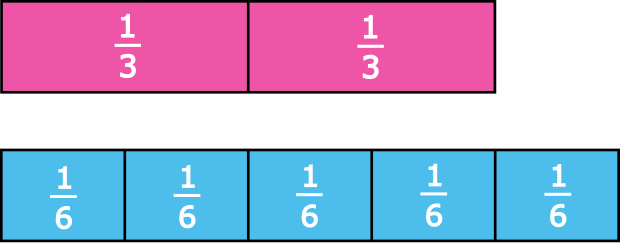
In the picture above, it's easy for students to visualize and understand that five-sixths is larger than two-thirds. So therefore, they can write...

How about the example below - does your student/s know which fraction is larger or smaller?

Fraction strips make it easy for students to compare fractions with unlike denominators. With the fraction strips pictured below, kids can easily see which fraction is largest:
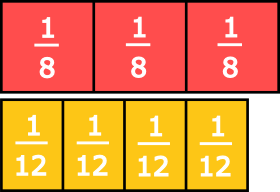
It's pretty obvious with our fraction strip model that:

Comparing Fractions Activity
What you Need:
- Set of Fraction Number strips for each player
Preparation:
- Each player should have a set of number strips that have been cut into the individual fraction pieces.
- Cut the fraction card sheet into the individual fraction cards.
How to Play:
- Have someone thoroughly shuffle the fraction cards and then place them in a pile face down in the middle of the players.
- Decide which player will go first by having each player draw from the face down fraction cards. The player with the largest fraction goes first. (Players can use their fraction strips if there is a disagreement to which fraction is the largest.)
- Place the cards that were drawn to see who goes first back into fraction card pile, and give the pile another good shuffle and place the pile face down again in middle of the players.
- The first player begins the game by choosing the top two cards from the face-down pile, turning them face-up, and placing them down in middle of players.
- That player who drew the cards has the first chance, (without referring to their fraction strips) at saying aloud, one fraction is greater or smaller than the other fraction. If the player makes a correct statement, they receive 2 points. The other players have a chance to agree or disagree, and they should refer to their fraction number strips to prove their disagreement. The first player that disagrees and is correct, receives 2 points. If a player disagrees and is not correct, they lose 2 points.
- Play continues clockwise in the same way to the next player.
- The player with the most points at the end of 10 rounds is the winner!


